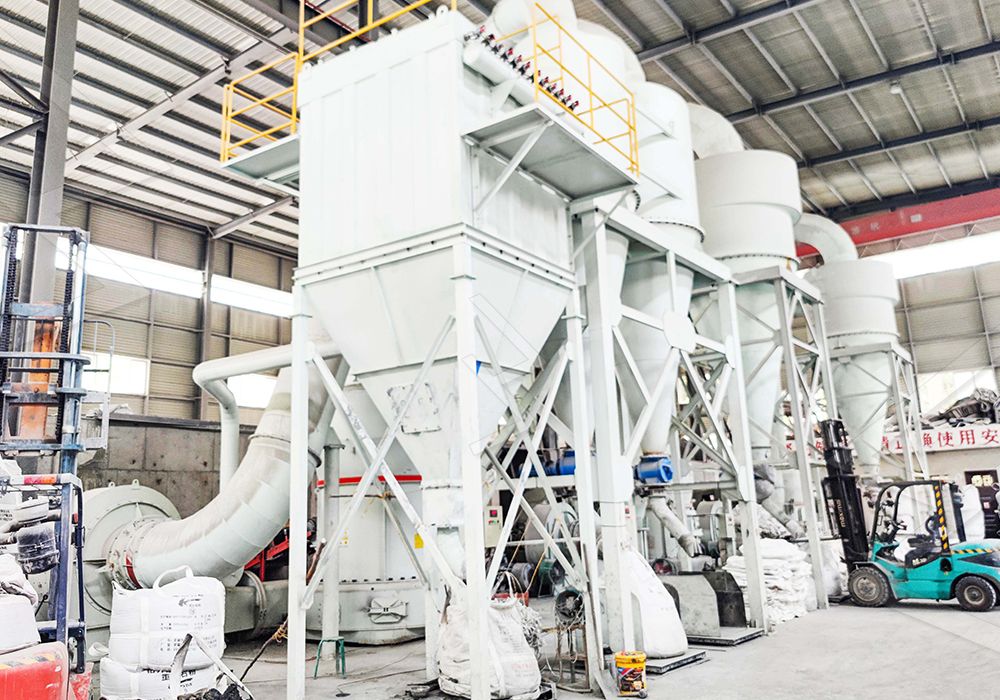150 Mesh Quartz Sand Grinding Mill: Key Equipment for Fine Powder Production
150 Mesh Quartz Sand Grinding Mill: Key Equipment for Fine Powder Production
Quartz sand, a fundamental material across numerous industries, demands precise processing to achieve the optimal 150 mesh specification required for applications in glass manufacturing, foundry work, and construction materials. The transformation of raw quartz into this consistently fine powder represents a significant technological challenge that requires specialized grinding equipment capable of delivering both precision and efficiency.
The Critical Importance of Proper Mesh Size
When processing quartz sand to 150 mesh (approximately 100 microns), the selection of grinding equipment becomes paramount. This specific fineness represents a sweet spot for many industrial applications, providing the perfect balance between surface area and particle integrity. Traditional grinding methods often struggle to achieve the consistent particle size distribution required, leading to product quality issues and operational inefficiencies.

The journey from raw quartz to precisely graded powder involves multiple considerations: hardness of the material (7 on the Mohs scale), the need for iron contamination control, and the economic reality of energy consumption. Modern grinding technology has evolved significantly to address these challenges, with several mill types offering distinct advantages for quartz processing.
Advanced Grinding Solutions for Quartz Applications
Among the various options available for quartz sand processing, our MW Ultrafine Grinding Mill stands out as an exceptional choice for operations requiring precise control over final product specifications. This advanced mill system represents the culmination of years of research and practical application in mineral processing.
The MW series distinguishes itself through several innovative features specifically beneficial for quartz processing. With an input size capability of 0-20 mm and throughput ranging from 0.5 to 25 tph, this equipment accommodates most production requirements while maintaining consistent 150 mesh output. The integrated pulse dust collector and muffler system ensures environmental compliance—a critical consideration in today’s regulatory landscape.
Technical Superiority in Quartz Grinding
What truly sets the MW Ultrafine Grinding Mill apart is its engineering design focused on the unique challenges of hard mineral processing. The absence of rolling bearings and screws within the grinding chamber eliminates common failure points that plague conventional mills when processing abrasive materials like quartz. This design consideration significantly reduces maintenance requirements and extends operational lifespan.

The grinding efficiency achieved through newly designed grinding curves of the roller and ring system enhances productivity while reducing energy consumption. Independent testing confirms that with identical fineness and power input, the MW mill achieves 40% higher production capacity compared to jet mills and stirred grinding mills, while doubling the output of traditional ball mills. Simultaneously, system energy consumption registers at just 30% of comparable jet milling operations.
Precision Particle Control
For quartz sand producers, consistent particle size distribution is non-negotiable. The MW Ultrafine Grinding Mill addresses this requirement through its advanced cage-type powder selector incorporating German technology. This system effectively increases powder separation precision, while the configurable multi-head cage-type selector allows operators to fine-tune performance based on specific yield, fineness, and sieving rate requirements.
The operational flexibility enables product fineness adjustment between 325-2500 meshes, with the capability to achieve d97≤5μm in a single pass—far exceeding the requirements for standard 150 mesh quartz sand while providing headroom for specialized applications.

Another notable solution for quartz processing comes from our LUM Ultrafine Vertical Grinding Mill, which offers complementary advantages for specific operational contexts. With its input size of 0-10 mm and capacity range of 5-18 tph, the LUM series incorporates the latest grinding roller technology from Taiwan and German powder separating technology. The unique roller shell and lining plate grinding curve design promotes easier material layer generation, enabling high finished product rates through single-pass powder milling.
Frequently Asked Questions
What makes the MW Ultrafine Grinding Mill particularly suitable for 150 mesh quartz sand production?
The MW mill’s combination of adjustable fineness (325-2500 meshes), high efficiency grinding curves, and specialized powder selection technology provides unparalleled control over final product specifications. The absence of internal bearings and screws prevents contamination and reduces maintenance—critical factors when processing abrasive quartz materials.
How does the energy consumption of modern grinding mills compare to traditional equipment?
Advanced designs like the MW Ultrafine Grinding Mill demonstrate significant energy savings, consuming only 30% of the power required by jet mills for equivalent output. This efficiency stems from optimized grinding mechanics, reduced internal friction, and intelligent system design that minimizes energy waste.
What environmental considerations are addressed in contemporary grinding mill design?
Modern mills incorporate comprehensive environmental protection features including efficient pulse dust collectors that eliminate dust pollution, silencers and noise elimination rooms that reduce operational noise, and fully sealed systems that prevent material escape. These features ensure compliance with international environmental standards while maintaining operational efficiency.
How does the maintenance requirement of the MW Ultrafine Grinding Mill compare to conventional mills?
The strategic elimination of rolling bearings and screws within the grinding chamber dramatically reduces maintenance frequency and complexity. External lubrication systems enable maintenance without production shutdowns, while the availability of genuine spare parts and technical support ensures worry-free operation throughout the equipment lifecycle.
